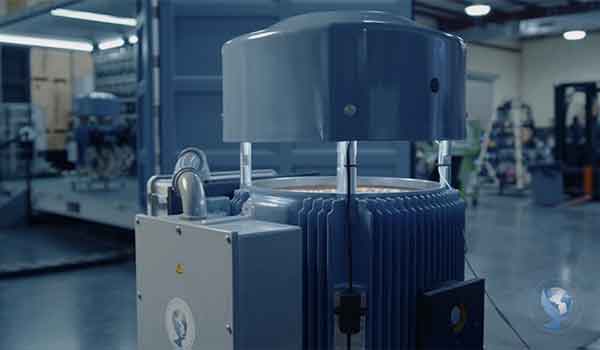Here’s the Data.
Straight Off the Power Company Website, Florida Power and Light (FPL)
By Gene Brown, Lead Engineer at Holcomb Energy Systems

Recently, the Holcomb Energy Systems (HES) In-Line Power Generator (ILPG) was installed into a 5,000 sq ft commercial office facility/warehouse in southwest Florida for testing. The power provider company for this area is Florida Power & Light (FPL). The following graphs show a “snap-shot” in time, in which the ILPG was installed and running a building load consisting of a large HVAC System, including a commercial grade Air Handler Unit (AHU) and two outdoor compressor units, fluorescent lighting with ballast, large ceiling halogen lamps and various smaller lighting fixtures and duplex receptacles.

This graph was taken directly from the customer FPL billing website. From April 28th, 2022 to May 26th, 2022 the building load remained consistent. The HES ILPG was installed and in-circuit from April 28, 2022 to May 11th, 2022. There is one day shown, May 2, where building power was off for maintenance purposes.
Notice the graph displays a perfectly consistent reading during the days that the HES ILPG System was installed and in-circuit, with a power company charge of 130 kWH per day despite changing outdoor temperatures, as documented on the red line. Why are these readings so consistent? Because the ILPG responds to the building’s fluctuating electrical demands in real time, feeding more power when it’s needed, backing off when it’s not.
Mid-day on May 11, the ILPG was removed from the building’s electrical system. May 11 through May 26 shows that FPL charged an average of 266 kWH per day — with the identical building electrical load.

This is a redundant meter reading to the FPL outside meter displayed above. It also measures input power to the HES ILPG system. The results on this graph mirror and corroborate the readings from the FPL outside meter.
NOTE: The AccuMeter displays only averages across the same time period without the “dips” — highs and lows.

This graph was also taken directly from the FPL billing website and shows the hourly kWH usage per day in relation to outside temperature changes. In Florida, the days start out cooler and by mid to late afternoon, the air conditioning systems are usually running at maximum capacity to mitigate higher outside temperatures. From April 28 to May 11, while the ILPG system was in circuit, FPL charged 5.43 kWH per hour. On May 11, at 1400 (2:00pm EST), the ILPG was removed from the building’s electrical system. The FPL graph data shows an immediate increase in the average kWH hourly usage. From that point on hourly kWH usage followed a more “conventional” average use of 7.04 kWH (early morning) to 13.32 kWH (late afternoon) on a daily basis. In contrast, while the ILPG was installed, the hourly usage remained at a stable low rate regardless of the outside temperature or how much the AC was running at any time of day.
These graphs, direct from Florida Power & Light’s billing website and corroborated by the HES System meters, verify that when the ILPG system is installed and in-circuit, it delivers an average daily efficiency of 205%. During the day, the lowest efficiency observed is 130% while the greatest efficiency observed is 260% during late afternoons because of the increased building load of the air conditioning system.
These incredible results from the HES ILPG are dramatically and consistently reducing the monthly electric bill and carbon footprint of this facility.

